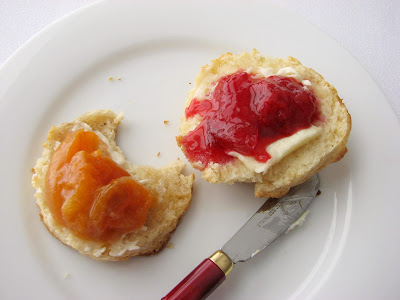
A couple of winters ago I made a very delicious Cranberry Walnut Crostata from a recipe by Marcel Desaulniers by way of Rose Levy Berenbaum in her Pie and Pastry Bible. I loved the dough because it was the first time I worked with a nut pastry without having to struggle to roll it out. It has just the right ratio of ingredients to make it supple and easy to handle.
When I bought what will likely be some of the last gorgeous peaches of the summer, I thought it would be fun to try that dough again. And since peaches often seem to evoke the south as do pecans, I decided to switch out the walnuts in the pastry dough for pecans.
If you're lucky enough to possess some juicy sunset glow peaches, you may want to celebrate them in simple style with this rustic galette. It's pretty easy to make and even easier to enjoy. Not too sweet, not too rich - just right for a light and delicious close to an end-of-summer soiree.

Bench notes:
- Lightly toast the pecans in a 350 degree oven for about 8 - 10 minutes or until they just start to give off a light toasty aroma.
- The pastry dough has less sugar and less butter to make it less fragile. The pecans in the pastry dough should be finely ground with the flour to making handling and rolling out the dough effortless.
- Berenbaum advises against substituting almonds (too hard) or pistachios (too soft) for the nuts in the dough.
- You don't need a lot of extra flour to roll out the pastry, just enough so it isn't sticking to the rolling pin or the parchment. Use a pastry brush to dust off any excess flour remaining on the surface of the pastry before you add the fruit.

Peach Pecan Galette
pastry dough adapted from Desserts to Die For by Marcel Desaulniers and Pie and Pastry Bible by Rose Levy Berenbaum
Serves 6 - 8
1/2 C (about 2 oz) pecans, toasted
1 T + 1 t sugar, divided
pinch of cinnamon
1 C flour
1/4 t salt
2 oz (4 T) cold butter, cut into pieces
1 egg yolk
3 T ice water
2 large or 3 medium fresh peaches
2 1/2 T granulated or brown sugar
1 T flour
Egg wash
1 egg
1 T water
few grains of salt
Subtract 2 tablespoons of pecans from the 1/2 cup. Chop them into small pieces and combine with the 1 tablespoon of sugar and a pinch of cinnamon. Set aside as a garnish to sprinkle on top of the edges of the formed pastry just before baking.
For the pastry, place the flour, 1 teaspoon of sugar and remaining pecans in the bowl of a food processor. Process until the nuts are finely ground into the flour mixture. Add the cold butter pieces and pulse until the texture looks like coarse meal with a few larger pieces of butter. Whisk together egg yolk and ice water. Add to dough mixture and pulse until dough begins to come together in clumps and there are no dry flour patches.
Turn the dough out onto a piece of plastic, bring it all together and form into a disc. Wrap tightly and chill for 30 minutes or until firm enough to roll.
When ready to assemble, preheat oven to 375 degrees.
Place the dough on a piece of parchment paper lightly dusted with flour. Roll into a 14" circle, using a light dusting of flour as you go to prevent sticking. Slide the rolled dough and the parchment paper onto a baking sheet or pizza pan. Chill while you prepare the filling.
Cut the peaches into wedges and toss with the sugar and flour until all the pieces are evenly coated. Arrange them on the dough leaving a 1 3/4 " border around the edge. Fold the border of dough over the filling, tucking and pleating in places where needed. Refrigerate until your oven is ready.
For the egg wash, whisk together the egg, water and salt until fully blended. Brush the border of pastry lightly with egg wash (you only need a bit) and sprinkle with the reserved 2 tablespoons of chopped pecans and sugar/cinnamon mixture.
Bake for 28 - 30 minutes or until the pastry is golden brown and the filling is bubbling. Cool for at least 15 minutes on a wire rack.
















